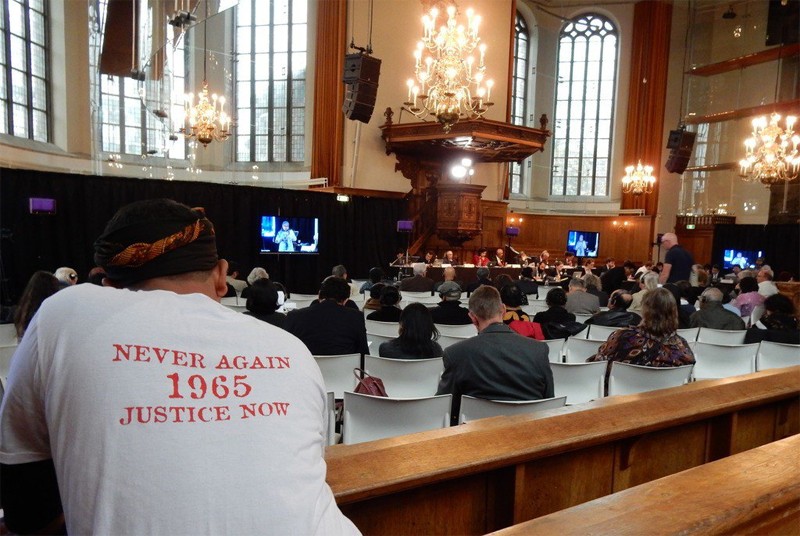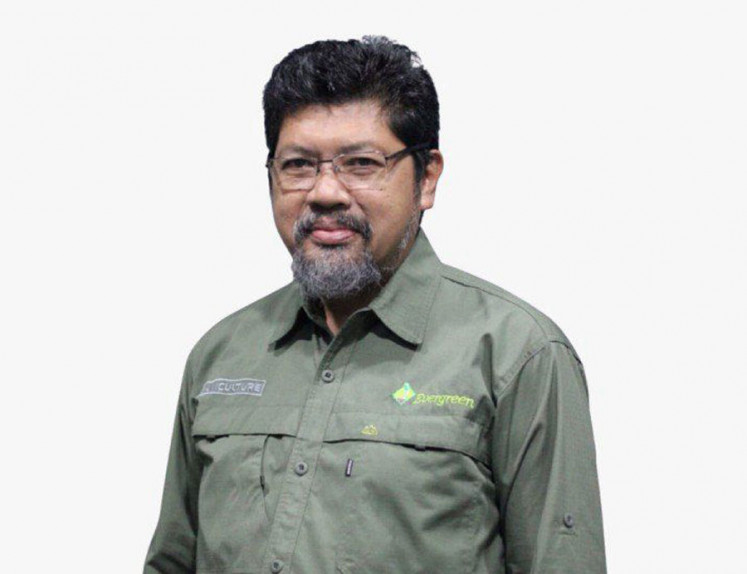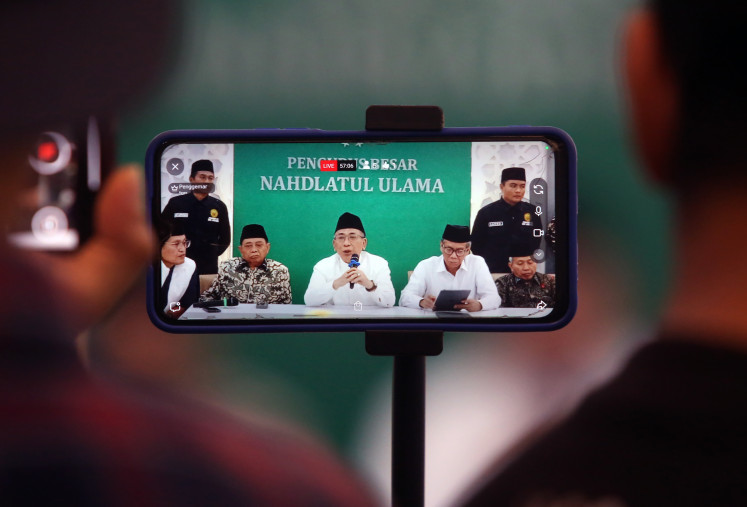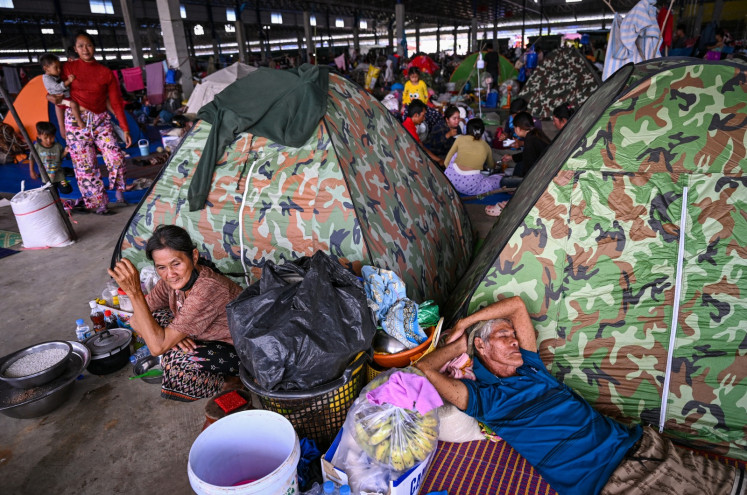Popular Reads
Top Results
Can't find what you're looking for?
View all search resultsPopular Reads
Top Results
Can't find what you're looking for?
View all search results55 years of impunity: How Indonesia is going backwards after the 1965 genocide
However, my latest research has proven the Indonesian military planned the killings. The military spent at least one year preparing to initiate and implement its attack. This included deploying civilian militia groups to support its operation.
Change text size
Gift Premium Articles
to Anyone
I
t is 55 years since the Indonesian military under former general Soeharto launched a military operation to take over the country following an attempted coup that was blamed on the Indonesian Communist Party.
Known as the “Annihilation Operation”, it resulted in the 1965-66 Indonesian genocide that killed up to 1 million unarmed civilians.
Since the time of the killings, the government has maintained that the violence was “spontaneous” and led by “the people” who rose in anger against communist followers deemed responsible for the attempted coup that killed seven army officers.
However, my latest research has proven the Indonesian military planned the killings. The military spent at least one year preparing to initiate and implement its attack. This included deploying civilian militia groups to support its operation.
My analysis of 3,000 pages of secret internal military documents strengthens various findings pointing to the Indonesian military’s involvement in the 1965-66 mass killings.
Yet no one has been brought to justice. President Joko “Jokowi” Widodo, who promised to resolve this crime as part of his presidential campaign, has failed to keep his promise.
Today, the Indonesian state remains conflicted over how to come to terms with this dark past. The rising influence of the military in Jokowi’s second term increases the risk of Indonesia facing similar military operations in the future.
Findings from the past
In 2010, during fieldwork in Aceh, I obtained access to 3,000 pages of military documents detailing how the military seized control of the Indonesian state before initiating and implementing the 1965-66 killings.
I call these internal military documents the Indonesian Genocide Files. Along with other newly public documents produced by the US State Department and the Chinese government, the files provide evidence of military agency behind the violence.
The Indonesian Genocide Files prove the 1965-66 killings were launched as a centrally co-ordinated campaign by the military. Under this campaign, the military deployed civilian militia groups and death squads. These carried out extrajudicial killings, forced disappearances and torture to terrorise the population into supporting military rule.
Beginning in mid-1964, the military actively planned to seize control of the Indonesian state.
The military leadership had grown increasingly concerned that President Sukarno was planning to weaken the military’s monopoly of armed force. The military was especially worried when Sukarno declared his support for the Communist Party’s proposal to establish a “Fifth Force” or people’s army.
The US State Department documents show the military leadership hoped to use a “pretext” event to launch its own undeclared coup and justify its planned attack against the Communist Party.
This pretext event occurred during the early hours of 1 October 1965, when a small group of disgruntled military officers, calling themselves the 30 September Movement, kidnapped and murdered key members of the military leadership, whom they accused of planning to stage a coup against Sukarno. The 30 September Movement had no connection to the Communist Party’s membership base, but the military was quick to blame the party.
Early on the morning of 1 October 1965, Major General Soeharto assumed the position of commander of the armed forces and refused to step down when ordered to do so by Sukarno. He retained his position as commander of the army’s Strategic Reserve Command.
The Indonesian Genocide Files also show that Soeharto seized control of the Mandala Vigilance Command, established as part of the country’s “Crush Malaysia” campaign. The command was granted the power to declare martial law internally, without first having to seek the approval of the president. With this new power, Soeharto declared martial law in Sumatra island on 1 October.
The use of civilian militias
The Indonesian Genocide Files show the military mobilised different types of civilian militia groups during the 1965-66 killings.
The military ordered members of political organisations to “assist”. These included Islamist student groups and nationalist groups such as Pemuda Pancasila. These organisations were encouraged to hunt down “communists” for the military.
Leading members of these organisations were further organised into military-sponsored death squads.
Members of the paramilitary Civil Defence and People’s Defence groups were also mobilised and co-ordinated through the territorial warfare command.
These civilian militia groups were involved in the torture, forced disappearances and extrajudicial execution of alleged communists.
The deployment of civilian militias was made possible under the military’s warfare structure.
As part of this structure, the Military Region Command parallels civilian government from the national level down to provincial, district and sub-district levels. In addition, the military supported the mobilisation of civilian militia groups as part of its Total Peoples Defense doctrine.
Learning from the past
To this day, no one has been held accountable for the 1965-66 killings.
Victims continue to live alongside perpetrators, terrorised into silence.
Jokowi’s promise to “resolve” past human rights abuses has failed to materialise.
Perhaps most worryingly, the military in Jokowi’s second term continues to increase its influence. Jokowi has allowed key military figures to hold important positions in his administration. This includes the defence minister and former opposition leader, retired general Prabowo Subianto, who has called for a return of the military’s Total Peoples Defence doctrine.
Jokowi has, to date, failed to speak out against Prabowo’s proposal, signalling the country’s setback as a democratic nation that managed to crush the military’s dominance more than 20 years ago.
Today, on the 55th anniversary of Soeharto’s coup and the beginning of the 1965-66 genocide, Indonesia, the world’s third-largest democracy, faces two stark choices.
It can seek to investigate and make public the atrocities that occurred in 1965-66, in the hope of never again allowing the country to sink into such horrific violence. Or it can continue to deny military agency behind the 1965-66 killings, while actively re-establishing one of the key policies that allowed the military to commit such atrocities in the first place.
Jess Melvin, ARC DECRA Fellow, Department of History, University of Sydney
This article is republished from The Conversation under a Creative Commons license. Read the original article.










